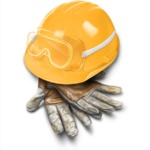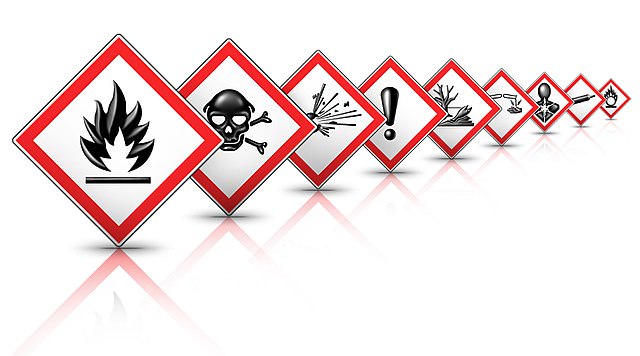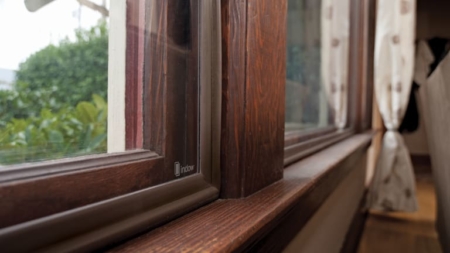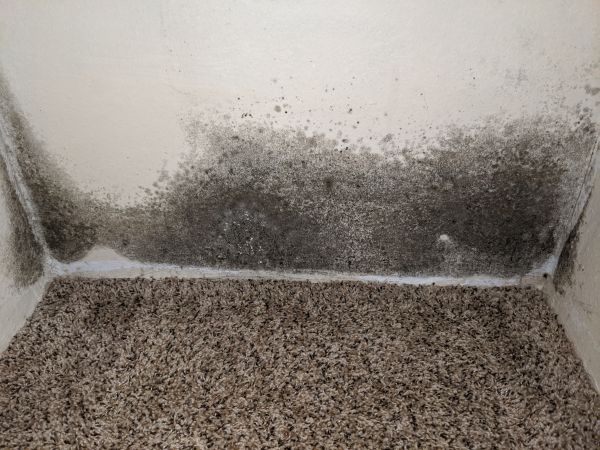The construction industry is one of the most hazardous fields to work in. Whether you are a single contractor doing a small renovation or a multi-level firm building a large commercial project, hazards can appear in many different ways. Dangerous situations range from inhaling dust or fumes to being struck by large equipment. The reality of these hazards requires that safety awareness and accident prevention is a must for all kinds of construction sites.
On the job site
Any area where you or your workers perform construction is considered the job site. This includes not only where the work is done, but also where you store and prepare materials. Before any work is to be started, the job site needs to be inspected and prepared for safety and loss prevention. This can include wearing proper safety equipment such as eye protection and harnesses, to removing or repairing dangerous materials and equipment, creating safety barriers and signs, and becoming knowledgable about current safety warnings and processes for the particular job at hand. Each job site should also have a first aid kit which is regularly inspected and updated. These examples are not an exhaustive list of needs or hazards but a small sample of items to be aware of in order to have a safe workspace. No job site can be 100% accident proof yet working towards that goal makes any job site safer and more productive.
On site resources
Safety resources that should be kept on the job site include information on operational and safety procedures for current required tools such as power tools, harnesses, and ladders, SDS (Safety Data Sheets – formally MSDS) for any hazardous materials or chemicals that are used on the job site, extra PPE (personal protection equipment) in case something gets lost or broken, and a logbook for current safety concerns or needs. OSHA also requires that companies hang the poster “Job Safety and Health: It’s the law” at all job sites.
Weekly safety meetings
Weekly safety meetings or toolbox meetings are excellent resources to train and reinforce safety techniques and issues for your crew. These short meetings focus on one safety idea or technique, usually pertaining to a job that is currently being performed or an issue that has occurred on the job site. These meetings are not only used to talk about current safety issues, but also can be used as an educational tool for new workers and a refresher for veteran workers. Recording or logging of weekly safety meetings are also used as proof to OSHA for safety education and also to other companies that look for sub-contractors that have an excellent safety record.
Who is responsible for your safety?
On any job site, there should be one or more designated persons in charge of monitoring the overall safety of the construction project. On smaller jobs it usually is the foreman or individual in charge of the work. On larger projects, firms use a construction safety officer to oversee the safety of the site. The designated safety person creates and enforces this program but when it comes to the bottom line, each individual worker is responsible for their own safety and the safety of those around them. It takes just one moment of lack of awareness to cause an accident. Any system is useless unless followed by all workers.
Record Keeping
Excellent safety logging and record keeping is not only beneficial, but is required in certain situations. As stated before, keeping records of weekly safety meetings including who attended, shows OSHA and prospective clients that you are meeting and exceeding safety standards for your projects. OSHA also requires any company with more than 10 employees to report any major incidents and records for the past 5 years kept on file. OSHA provides 3 different forms to fill out for record keeping. Form 301 is used for individual injury and illnesses, form 300 is for tracking all injuries and illnesses, and form 300A is a summary of any injuries and illnesses. For more information and download the forms visit www.osha.gov/recordkeeping/index.html
Training
Depending on what kind of training you are looking for, resources are available in many formats. For many topics, training can be provided on site and by experienced co-workers and supervisors. Manufacturers provide safety and operational documentation for tools and materials. For chemicals, read up on the MSDS information on uses and disposal. Other types of training such as flagging and forklift operation may require certification. It should be the supervisors goal to fully train any worker on the equipment and tasks that they are to perform. It should also be the workers goal to make sure they are fully trained on any job they are asked to do. If you as a worker have any questions or safety concerns, make sure you ask or bring up the subject to your supervisor or safety officer before you continue. Understanding the hazards and proper procedures to any task is not only safe but more efficient towards finishing the project.
OSHA
OSHA – Occupational Safety and Health Administration – http://www.osha.gov, is a US government body that monitors and assists companies by providing standards, information, education and training to ensure healthy working conditions. OSHA monitors all occupational fields, not just construction and covers most private and public sector workers in all 50 US states.
Conclusion
According to OSHA, construction accidents account for 20% of all work force deaths (https://www.osha.gov/oshstats/commonstats.html) . By investing in a successful safety training and education program, you can keep a healthy and productive crew.






